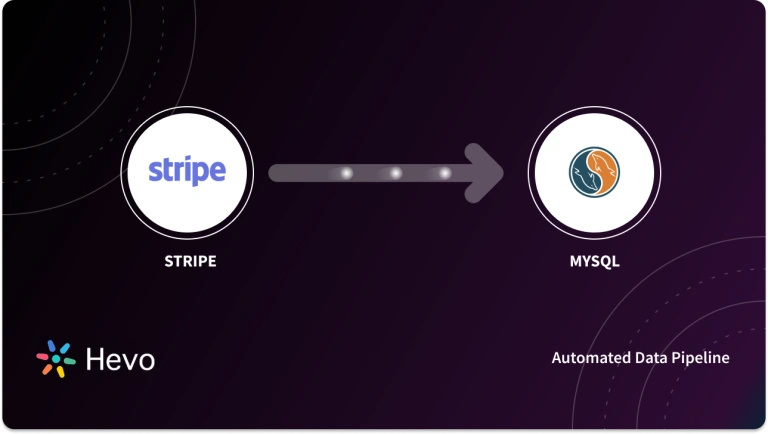Are you looking to integrate your Stripe and Google Analytics data? If your answer is yes, then you are in just the right place. In this blog post, you will be taken through the 2 aspects of doing that like how to pull transactions from the Stripe API directly into Google Sheets and then moving the data from Google Sheets to Google Analytics. Data can be moved into Google Sheets using the API Connector add-on for Google Sheets. Stripe is a widely used payment processor which is very well known for its amazing APIs.
Table of Contents
Integrating Stripe and Google Analytics
Method 1: Using Stripe APIs
Utilize Stripe’s APIs to manually extract and load your payment data into your preferred data warehouse for customized data processing.
Method 2: Using Hevo Data
Effortlessly connect Stripe to your data warehouse with Hevo’s no-code platform, allowing real-time data syncing and automated transformations. Simplify your Stripe integration process with Hevo.
Method 1: Using Stripe API and Google Sheets
Step 1: Acquire Data Using Stripe API
The first step is to obtain an API key from Stripe and then set up a request to load metrics from Stripe to your spreadsheet.
- Step 1: Obtaining the Stripe API Key
- Step 2: Generate an API Request URL
- Step 3: Load Stripe API Data to Google Sheets
- Step 4: Get More Data
- Step 5: Handle Pagination
Step 1.1: Obtaining the Stripe API Key
- Sign in to your Stripe account and click on Developers > API keys from the left-side menu.
- When you land on this page, you will notice that API keys have already been generated for you automatically. You can take your pick between test data and real data; they both work in exactly the same way. (You can also use live data by simply toggling the ‘Viewing Test Data’ option). You can get the secret token by clicking on the button at the bottom of the page.
- After you have uncovered the secret key, save a copy of it as you will be needing it in a while.
Step 1.2: Generate an API Request URL
You can easily follow the Stripe API documentation to demand a list of transactions.
- Base URL:
https://api.stripe.com/v1 - Endpoint:
/charges - Parameters:
?limit=#_OF_RECORDS
The limit parameter is not necessary, even though it is optional we will be including it to show how parameters work. When we put all of this together, we get the full API Request URL:
https://api.stripe.com/v1/charges?limit=100Step 1.3: Load Stripe and Google Sheets API Data
You can enter these values into the API Connector and then start importing your Stripe data into Google Sheets.
- Open Google Sheets and click on Open by navigating to Add-ons > API Connector > Open.
- When you get the Create screen, input the Request URL you just generated:
- Go to headers and input a key-value pair like this:
| Authorization | Bearer YOUR_SECRET_TOKEN |
- Put in the token you revealed in step 3 in place of
YOUR_SECRET_TOKEN. - Then create a new tab and click on ‘Set current’ to employ that tab as your data destination.
- Assign a name to your request and then click on Run. In a while, you will see sales data fill-up the Stripe Charges tab in your Google Sheet.
Step 1.4: Get More Data
To get the full list of available API requests, you can check out the Stripe documentation here, but you can also just play around with the URLs you enter in the API URL path field. You can start by trying out the following (one at a time):
- https://api.stripe.com/v1/charges
- https://api.stripe.com/v1/products
- https://api.stripe.com/v1/customers
- https://api.stripe.com/v1/balance
- https://api.stripe.com/v1/payouts
- https://api.stripe.com/v1/refunds
Step 1.5: Handle Pagination
Stripe by default returns only 10 records at a time. If you want to retrieve more, you can use the ‘limit’ and ‘starting_after’ parameters as described in the Stripe documentation, like this:
You can set the ‘limit’ value to be between 1 and 100, while the ‘starting_after’ parameter must take the name of an object ID value in your report.
In the API Connector, you will be able to run these requests separately or loop through them automatically using pagination handling (paid feature).
Step 2: Creating Google Analytics Report Using Google Sheets Data
The next step is to use an Analytics add-on in Google Sheets to create the report you require. Once your data has been loaded to Google Sheets, you can clean it up, create graphs and even share your findings with your team.
Step 2.1: Get the Analytics Add-On
- If you don’t already have an account, sign up to start using Analytics.
- Go to Google Sheets and create a new spreadsheet.
- Click on Add-ons > Get add-ons.
- Look for the Google Analytics add-on and then click on FREE.
- Finally, click on Allow.
Step 2.2: Create an Analytics Report
- Open a spreadsheet in Google Sheets.
- Click on Add-ons > Google Analytics > Create a new report.
- Insert your information and click on Create Report. Your analytics data will appear in a new sheet.
- For any further help, you can read through Google Analytics Spreadsheet Add-On.
Method 2: Using Hevo Data
Step 1: Connect Stripe as your Source
Perform the following steps to configure Stripe as a Source in Hevo:
- Click PIPELINES in the Navigation Bar.
- Click + CREATE PIPELINE in the Pipelines List View.
- In the Select Source Type page, select Stripe.
- In the Configure Your Stripe Source page, specify the following:

Step 2: Connect your Destination
After configuring Stripe, select your target Destination, and you are done.
Get Started with Hevo for FreeConclusion
In this blog post, you have learned the five-step process of moving data from Stripe to Google Analytics using Google Sheets. This process can be tedious and time-consuming.
Also, you might have valuable data in various other marketing applications that need to be brought together for a complete understanding of your customers. To do that, you need to write custom code, which can get very complicated. You can avoid all of this by trying out Hevo Data.
Visit our Website to Explore HevoIt is a No-code Data Pipeline that can bring data from not just Stripe, but from all of your marketing applications without the headache of manual coding. You can use its simple interface to connect all major SaaS applications to your analytics or BI tool in a matter of minutes.
You can try Hevo for free to see if it suits your needs! Sign Up here and take Hevo for a spin! You can now transfer data from sources like Stripe, Google Analytics, etc. to your target destination for Free using Hevo!
Have any further queries? Let us know in the comments section below.
FAQs
Does Stripe provide Analytics?
Yes, Stripe provides built-in analytics for tracking revenue, payments, subscriptions, and other business metrics. Users can access reports and dashboards to monitor performance and trends within the Stripe dashboard.
Does Google use Stripe?
Google uses Stripe for its payment processing services in certain cases, such as handling transactions for Google Workspace subscriptions and other services.
How to test Google Pay Stripe?
To test Google Pay with Stripe, you can use Stripe’s test environment. Enable Google Pay in your Stripe account, configure a test Google Pay integration, and use Stripe’s provided test card information for simulating payments.













